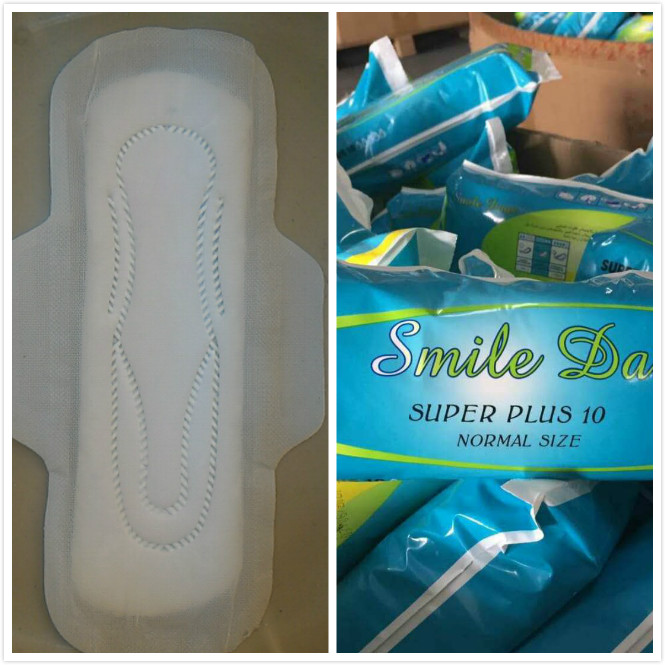We have strong production for Sanitary Napkin with 8 lines, and the raw material is best quality. The SAP is Japanese sumitmo, and the fluff pulp is from America. So the Soft cotton cover makes you feel more comfort.
The production environment is clean, we guarantee the sanitary pad is totally hygiene.
We have many kinds of sanitary towels, and the sanitary pads can meet your different requirement for day and night.
Shipping picture:
Sanitary Napkin Sanitary Napkin,Cotton Sanitary Napkin,Fiber Sanitary Napkin,Ultra Thin Sanitary Napkin Tianjin Jiao rou Sanitary product company , http://www.tjsanitary.com
Brand Name
Jiao Rou
Size
155mm, 180mm, 240mm, 245mm, 280mm, 290mm, 300mm, 320mm, 350mm, 400mm
instruction
SAP, Wood pulp, compsoite paper, PE film, release paper
Material
Cotton, non-woven
Packing
10/20/40pieces per pack or as your request


Radish and carrot storage and preservation technology
Radishes and carrots are root vegetables, edible parts of the roots of the fleshy root; no physiological dormancy, in the storage period encountered the appropriate conditions will germinate bolting, causing heartburn. It may happen before or after harvesting. Germination and deterrence caused weight loss and nutrient reduction in the fleshy roots, as well as soft tissue, reduced flavour and reduced quality. The key to storage and preservation of radish and carrots is to prevent germination and heartburn. I. Variety and Harvest Storage Late-maturing varieties of radish are better preserved in late autumn. Generally, the standard of harvesting is that the fleshy root has fully inflated, the base is rounded, and the leaf color turns yellow. Carrots are characterized by bright skin, slender roots, small rhizomes, and fine stems. Usually, the standard for harvesting is that the fleshy roots are fully grown, the heart leaves are green, the outer leaves are slightly brown, sweet and soft. Timely harvest is very important for the storage of radish and carrots. The harvest is too early, the roots of the flesh are not fully expanded, the dry matter accumulation is not enough, the taste is light, and it is not resistant to storage; the harvest is too late, the heart column is easily cracked or bolting, and the texture is deteriorated. It is also easy to worry about. Remove loquat leaves when harvesting, pay attention to maintain the integrity of the fleshy roots, and minimize damage to the epidermis. Second, post-harvest handling radish and carrots post-harvest to remove the roots of disease, injury and worm erosion, while removing the petiole and stem disks, and grade storage and transportation of products. Diseases that occur during the storage of radish and carrots are caused by injury from the skin or injury due to freezing during storage. The main storage diseases of radish are black heart disease and soft rot disease. The main storage diseases of carrots are white rot disease and brown spot disease, which can be treated with 0.05% acetaminophen or trichostatin solution. Carrots stored for a long period of time should not be washed directly with water, and can be cleaned with chlorine water containing 25 μl/l of active chlorine. 3. The fleshy roots of packaged radish and carrots grow in the soil for a long period of time to form a well-defined aerenchyma, which can tolerate higher concentrations of carbon dioxide and is suitable for air-tight packaging and storage; and because the skin tissue lacks a horny protective layer, water retention is poor. Evapotranspiration loses water, and it needs to be stored in a high-humidity environment to prevent loss of water, keeping the cell's bulging pressure in a fresh state. Therefore, a polyethylene film bag (about 1 meter long and 0.5 meter wide) can be used as the inner package, about 20 kilograms per bag, folded or loosely tied, then placed in bamboo baskets, wooden baskets or plastic baskets; Stacking (stacking 1 to 1.2 meters wide, 1.2 to 1.5 meters high, 4 to 5 meters long), and then cover the plastic film, the bottom of the film is not covered, in a semi-closed state. 4. There are many storage methods for storing radish and carrots, such as storage in the kiln, kiln storage, ventilation storage, plastic bag storage, and thin film storage. Regardless of the storage method, it is required to maintain a low temperature and high humidity environment. Storage temperature should be 0 ~ 5 °C, relative humidity of about 95%. Storage temperature higher than 5 °C is easy to germinate, below 0 °C will be vulnerable to freezing damage, not only after the quality of frozen, but also perishable. Radishes and carrots are suitable for air-conditioned storage, and in southern China, the use of plastic bags or film semi-closed methods for spontaneous air-conditioning combined with low-temperature storage is currently promoted. These two methods should be carried out during the storage period to open the bag regularly to release the air or expose the air for ventilation. General spontaneous air conditioning combined with low temperature storage can extend the storage period of radish and carrot from 2 to 4 weeks at room temperature to 6 to 7 months. Carrots are sensitive to ethylene, and low concentrations of ethylene in the storage environment can make carrots bitter. Therefore, carrots should not be stored together with bananas, apples, melons and tomatoes, so as not to reduce the quality of carrots.